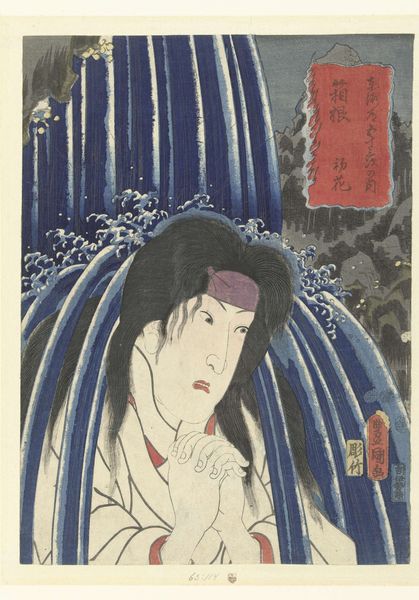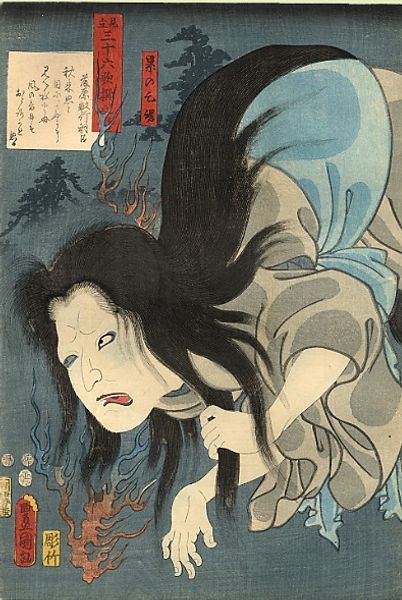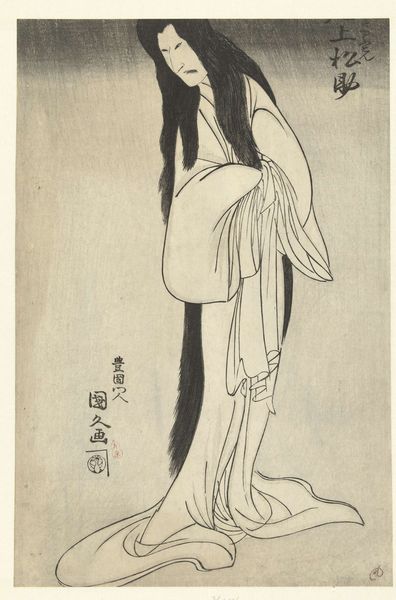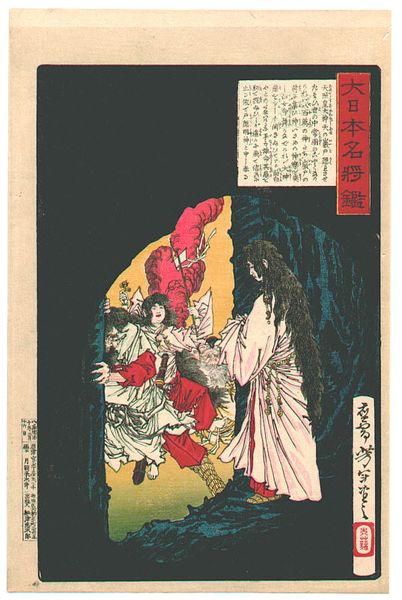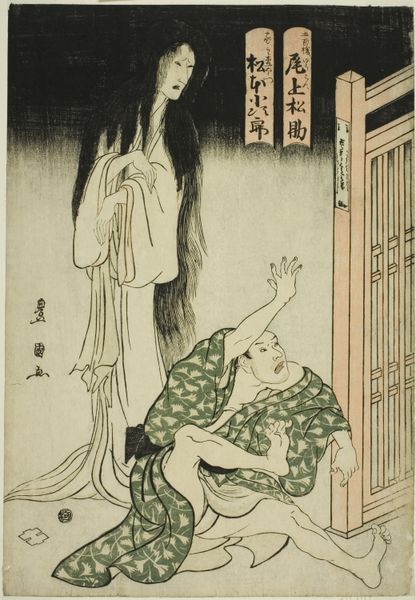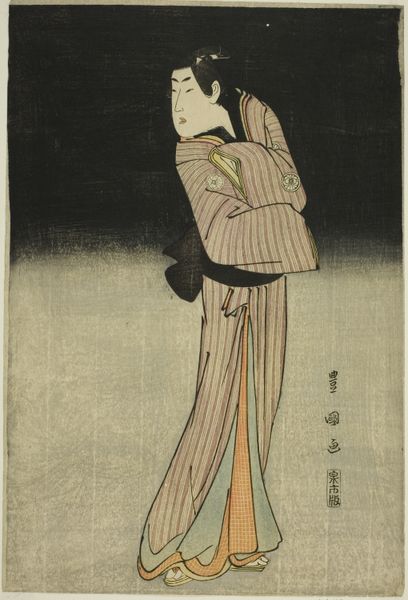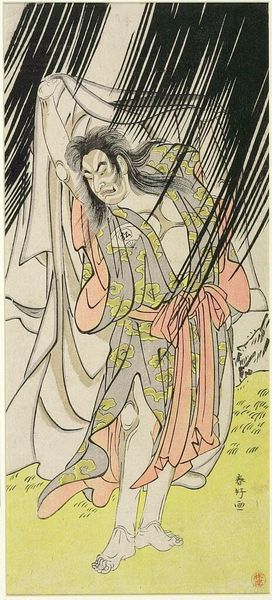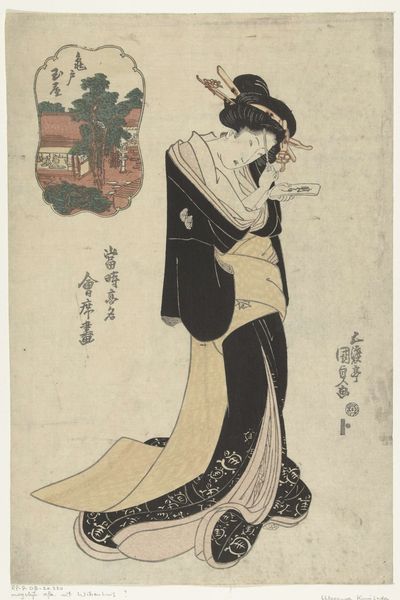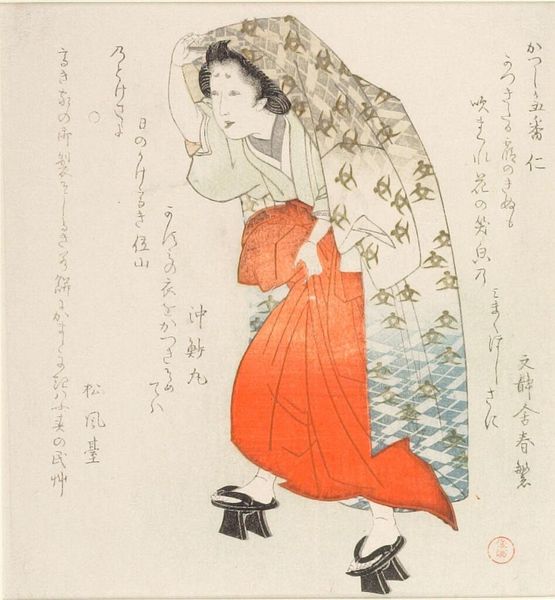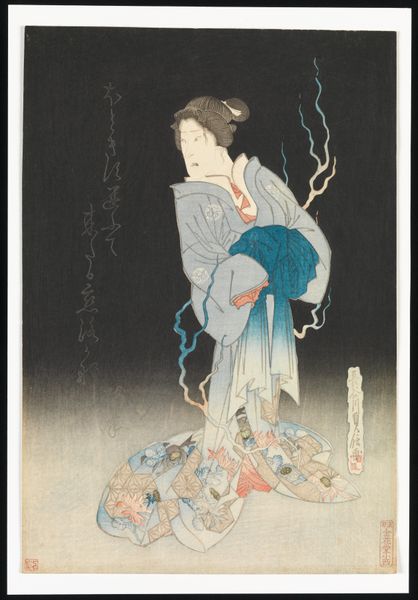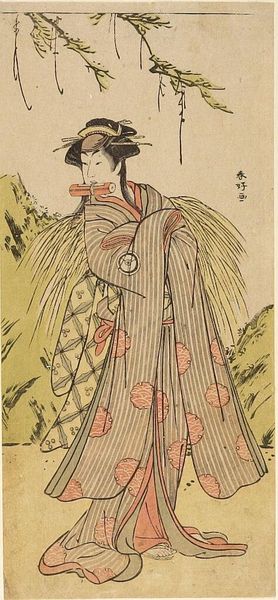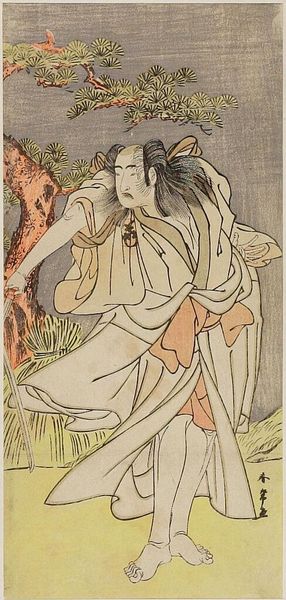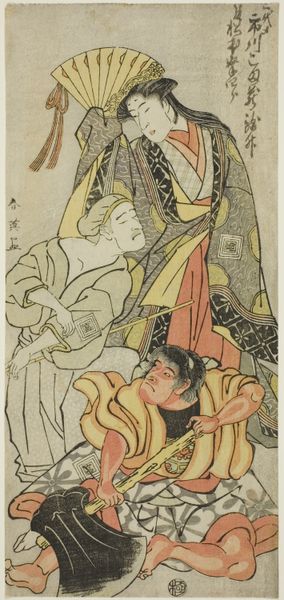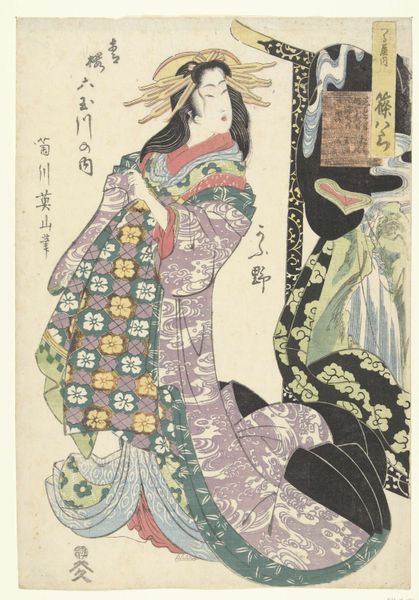
Copyright: Public Domain: Artvee
Editor: This is "Bōtarō’s Nurse Otsuji Prays to the God of Konpira for His Success", a woodblock print made in 1892 by Tsukioka Yoshitoshi. It's strikingly ethereal and ghostly. What kind of narratives do you think this print engages with? Curator: It’s crucial to examine Yoshitoshi’s work within the Meiji era’s context, a time of immense socio-political upheaval. This print beautifully exemplifies the complex intersection of faith, gender, and societal expectations prevalent then. Otsuji’s devotion, visualized beneath the cascading waterfall—likely representing purification—speaks to the limited avenues of agency available to women. What does this image tell us about the representation of women in the 19th century? Editor: It seems like she's using prayer as a form of agency in a situation where she doesn't have direct control. Curator: Precisely. Yoshitoshi was deeply interested in historical narratives and using the past to comment on the present. Consider also the ukiyo-e tradition; while often depicting pleasure quarters, it also captured folklore and the spiritual world. In that way, Yoshitoshi uses traditional elements to engage with the modern era's anxieties. Does her pale and gaunt portrayal strike you as idealized, or does it perhaps hint at the burden of her plea? Editor: It definitely leans away from idealization, which makes her seem much more human and relatable. It is a heavy burden she bears. Curator: Right. She is not just a nurse but a figure embodying hope and supplication, even if steeped in anxieties related to a changing society and expectations surrounding women. Editor: This makes me consider how historical and social context profoundly influences our understanding and the value of these works. I’m so glad I had the chance to think of this through a feminist lens! Curator: And through that lens, we see not just art, but a window into complex socio-historical power dynamics and individual resilience.
Comments
No comments
Be the first to comment and join the conversation on the ultimate creative platform.
